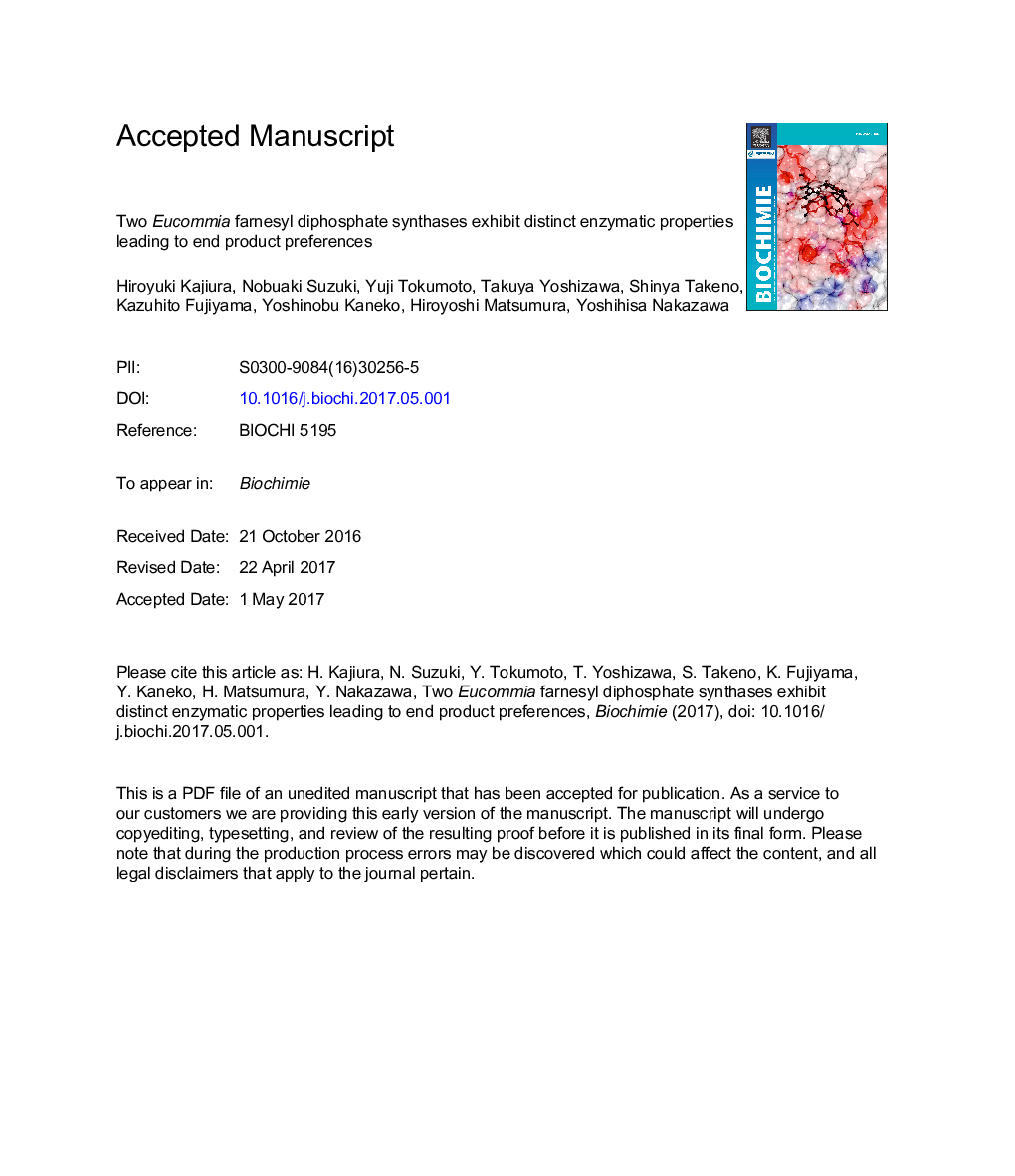| Article ID | Journal | Published Year | Pages | File Type |
|---|---|---|---|---|
| 5508955 | Biochimie | 2017 | 57 Pages |
Abstract
Farnesyl diphosphate synthase (FPS) is an essential enzyme in the biosynthesis of prenyl precursors for the production of primary and secondary metabolites, including sterols, dolichols, carotenoids and ubiquinones, and for the modification of proteins. Here we identified and characterized two FPSs (EuFPS1 and EuFPS2) from the plant Eucommia ulmoides. The EuFPSs had seven highly conserved prenyltransferase-specific domains that are critical for activity. Complementation and biochemical analyses using bacterially produced recombinant EuFPS isoforms showed that the EuFPSs had FPP synthesis activities both in vivo and in vitro. In addition to the typical reaction mechanisms of FPS, EuFPSs utilized farnesyl diphosphate (FPP) as an allylic substrate and participated in further elongation of the isoprenyl chain, resulting in the synthesis of geranylgeranyl diphosphate. However, despite the high amino acid similarities between the two EuFPS isozymes, their specific activities, substrate preferences, and final reaction products were different. The use of dimethylallyl diphosphate (DMAPP) as an allylic substrate highlighted the differences between the two enzymes: depending on the pH, the metal ion cofactor, and the cofactor concentration, EuFPS2 accumulated geranyl diphosphate as an intermediate product at a constant rate, whereas EuFPS1 synthesized little geranyl diphosphate. The reaction kinetics of the EuFPSs demonstrated that isopentenyl diphosphate and DMAPP were used both as substrates and as inhibitors of EuFPS activity. Taken together, the results indicate that the biosynthesis of FPP is highly regulated by various factors indispensable for EuFPS reactions in plants.
Keywords
CLDGGPSIDSGGPPIPPUPLCMEPGPPDMAPPFpsHMGRFPP3-Hydroxy-3-Methylglutaryl-coenzyme A reductaseMevalonic aciddiscrete optimized protein energyisopentenyl diphosphatedimethylallyl diphosphateMass spectrometryfarnesyl diphosphatefarnesyl diphosphate synthaseMVASubstrate inhibitionPrenyltransferaseDOPEGeranyl diphosphateUltra-performance liquid chromatographyGeranylgeranyl diphosphate synthasegeranylgeranyl diphosphate
Related Topics
Life Sciences
Biochemistry, Genetics and Molecular Biology
Biochemistry
Authors
Hiroyuki Kajiura, Nobuaki Suzuki, Yuji Tokumoto, Takuya Yoshizawa, Shinya Takeno, Kazuhito Fujiyama, Yoshinobu Kaneko, Hiroyoshi Matsumura, Yoshihisa Nakazawa,
